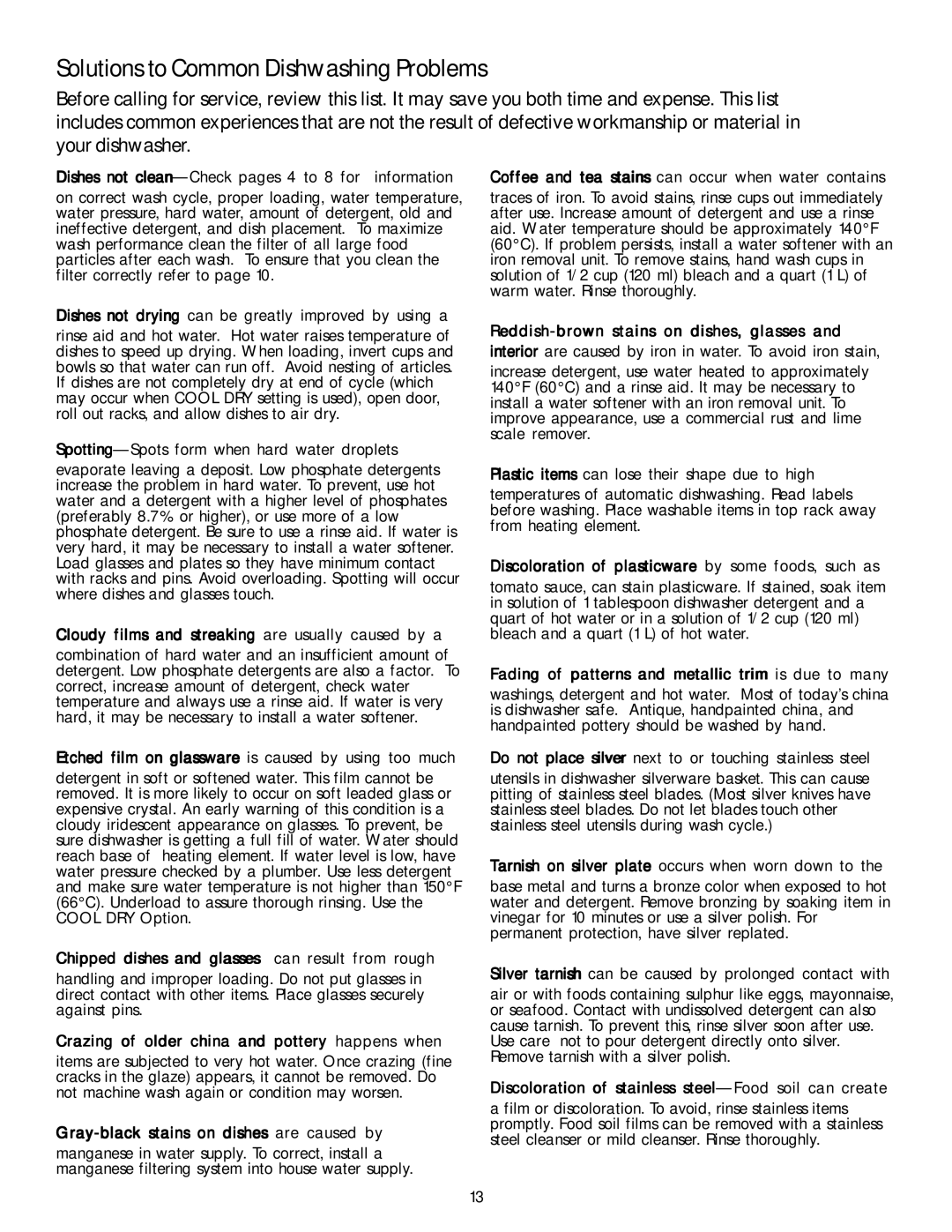587.1468 specifications
The Kenmore 587.1468 is a highly regarded dishwasher that stands out for its combination of performance, efficiency, and user-friendly features. Designed to meet the demands of modern kitchens, this model is known for its reliability and innovative technologies that enhance cleaning and ensure convenience.One of the standout features of the Kenmore 587.1468 is its advanced cleaning system. Equipped with a powerful motor and an efficient spray arm configuration, it provides thorough cleaning on various dishware and utensils. The multi-directional spray system ensures that water reaches every corner of the dishwasher, optimizing the cleaning process. This model also features a high-temperature wash option that removes stubborn stains and sanitizes dishes, making it ideal for households that prioritize hygiene.
In terms of energy efficiency, the Kenmore 587.1468 is Energy Star certified, which means it meets strict efficiency guidelines set by the EPA. This not only helps in reducing utility bills but also minimizes its environmental impact. The dishwasher utilizes a smart wash system that adjusts water and energy usage based on the load, ensuring that both small and large loads are washed effectively without wasting resources.
The design of the Kenmore 587.1468 also prioritizes user convenience. It includes an intuitive control panel with multiple wash cycle options, allowing users to choose the best setting for their specific cleaning needs. Options include normal wash, heavy-duty, and quick wash cycles. The dishwasher also has a delay start feature, which can be programmed to run at more convenient times, such as during off-peak hours or overnight.
Another notable characteristic is its spacious interior. The Kenmore 587.1468 can accommodate a variety of dishware sizes, including large pots and pans, thanks to its adjustable and removable shelves. The flexible rack system allows users to optimize space for dish placement, facilitating easy loading and unloading.
Moreover, the noise level is impressively low, making this dishwasher suitable for open-plan living spaces where quiet operation is essential. With a sleek and modern design, the Kenmore 587.1468 not only operates efficiently but also complements the aesthetic of contemporary kitchens.
In conclusion, the Kenmore 587.1468 dishwasher is a combination of innovative technology, user-friendly features, and energy efficiency, making it a valuable addition to any household seeking reliable cleaning performance. With its robust cleaning capabilities and thoughtful design, it stands as a top choice for discerning consumers.
